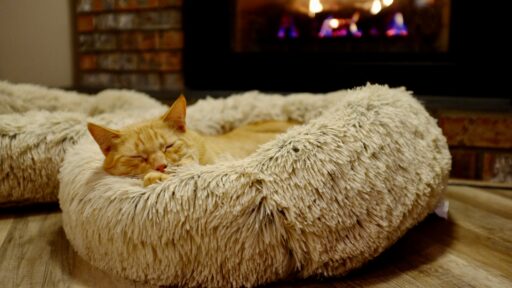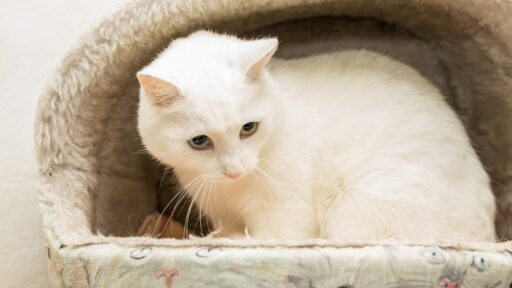Cat Feeders
Cat feeders are convenient devices that help cat owners provide food to their cats at regular intervals, both at home and away. Here’s more information about cat feeders, including the different types, benefits, selection tips, and how to use them:
Type
1. Manual Feeder:
Manual feeders require manual operation, usually by pouring food directly into a container or plate. This type of feeder is simple and practical and is suitable for cat owners who don’t need to leave home for long periods.
2. Automatic timer feeder:
Automatic timer feeders can provide cats with food at regular intervals according to a preset schedule. They usually have digital displays and regulators that can be set for multiple different feeding times each day. This type of feeder is suitable for cat owners who are away from home for long periods or who need to control the amount of food their cat eats.
3. Smart Feeder:
Smart feeders can be controlled and monitored remotely by connecting to a mobile phone app. They usually have more functions, such as remote feeding, video monitoring, feeding records, etc. This type of feeder is suitable for owners who are often out and about or who want to better monitor their cat’s diet and activity.
4. Interactive Feeder:
Interactive feeders can stimulate cats’ interest through some games or tasks, and allow them to obtain food by completing tasks. This type of feeder not only provides food but also increases your cat’s activity and intellectual stimulation.
Advantage
1. Regular feeding:
Automatic and timer feeders can provide food to cats on time according to a preset schedule without human intervention, ensuring that cats always have food available when they are home.
2. Control food intake:
By setting the amount of food in the feeder, you can better control the amount of food your cat eats and avoid overfeeding or irregular eating.
3. Reduce Stress:
For cat owners who need to be away from home for long periods, automatic feeders can reduce stress on cats and allow them to eat regularly when the owner is not home.
4. Easy to manage:
Automatic feeders usually have removable and easy-to-clean parts for easy cleaning and maintenance, keeping food fresh and hygienic.
5. Remote Control:
Smart feeders can be controlled remotely via a mobile app, allowing owners to monitor and adjust the feeder settings anytime and anywhere.
6. Reduce waste:
By precisely controlling the amount and time of food, you can reduce food waste and save costs, while also preventing cats from spoiling leftover food or attracting pests.
Selection Tips:
1. Capacity:
Choose the appropriate capacity based on your cat’s food intake and feeding frequency. Large-capacity feeders are suitable for multiple cats or owners who need to be away from home for long periods.
2. Materials:
Choose materials that are durable and easy to clean, such as stainless steel, plastic or ceramic. Make sure the materials are non-toxic, safe, and will not affect the cat’s health.
3. Food Type:
Some feeders are suitable for dry cat food and some are suitable for wet cat food. Choose the feeder that suits your cat’s food type.
4. Sturdiness:
Make sure to choose a feeder that’s stable and difficult to tip over to prevent your cat from knocking the feeder over while eating.
5. Easy to Setup:
For timers and smart feeders, choose models that are easy to set up and operate, ensuring you can easily adjust feeding times and food amounts.
Instructions:
Instructions for usage of automatic cat feeder:
Step 1:Unpacking and Inspection
– Carefully open the feeder box and check for any damage.
– Confirm that all parts are complete according to the user manual.
Step 2: Assemble
– If assembly is required, please follow the instructions provided in the user manual.
– Make sure all parts are connected securely to prevent food leakage or accidents.
Step 3: Power Supply
– Depending on the feeder type, run on batteries or plug it into an electrical outlet.
– Make sure the battery is properly inserted and/or the power cord is connected properly.
– Follow specific instructions on the type and size of battery required.
Step 4: Setup
– Most automatic feeders have a control panel or button for setting feeding times and portion sizes.
– Please refer to the user manual and follow the instructions to set up your feeder.
– Follow the instructions to set the current time on the feeder clock.
Step 5: Set feeding time
– Use the control panel to set the time you want the feeder to provide food.
– Some feeders allow multiple feedings per day. Set the appropriate frequency.
– If your feeder uses a 12-hour clock, double-check that the AM and PM settings are correct.
Step 6: Portion Control
– If your feeder allows portion control, set the amount of food to be given at each feeding.
-Adjust food portions accurately as directed in the user manual.
– Test to make sure the feeder is delivering food correctly.
Step 7: Stuffing Food
– Open the feeder’s food compartment.
– Fill the bin with your cat’s preferred dry or semi-moist food.
– Avoid filling the bin to prevent food from getting stuck.
Step 8: Test Run
– Before leaving a feeder empty, test it to make sure it is delivering food correctly.
-Set a feeding time in a few minutes and observe whether the food is delivered according to the preset program.
– Check for any food blockage or malfunction.
Step 9: Place the feeder
-Choose a suitable location for your feeder so your cat can easily access it.
– Make sure the feeder is stable and cannot be easily knocked over by the cat.
– Keep it away from water bowls and litter boxes to prevent contamination.
Step 10: Maintenance
– Clean feeders regularly to prevent the build-up of mold, bacteria, and food debris.
– Please refer to the user manual for specific cleaning instructions.
– Check and replace batteries as necessary.
– Check feeders regularly for signs of wear or damage.
Step 11: Monitor
– Pay attention to your cat’s behavior and weight to make sure that the feeder fulfills their needs.
-Adjust feeding times and food portions as needed.
– If any problem occurs, please refer to the user manual for troubleshooting.
Conclusion
By following these instructions, you can set up and use your automatic cat feeder effectively, ensuring your cat gets the right portions of food on time even when you’re not home.



